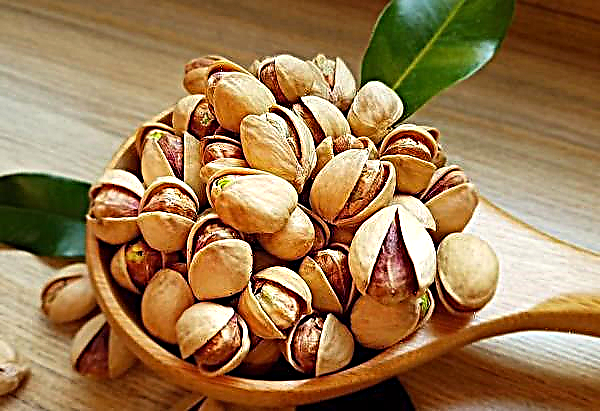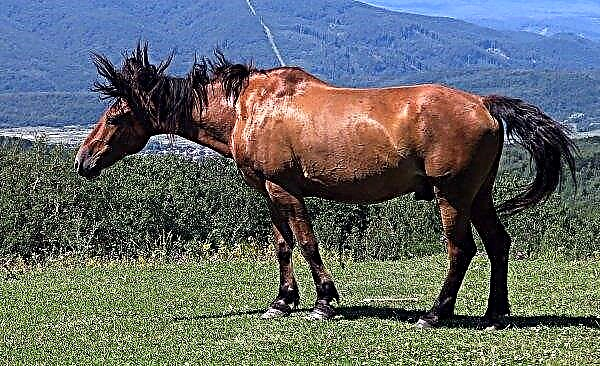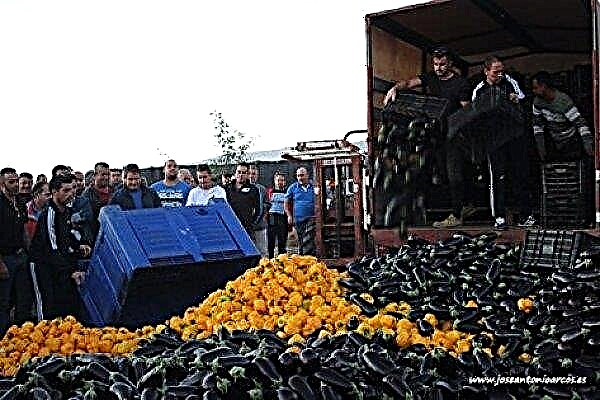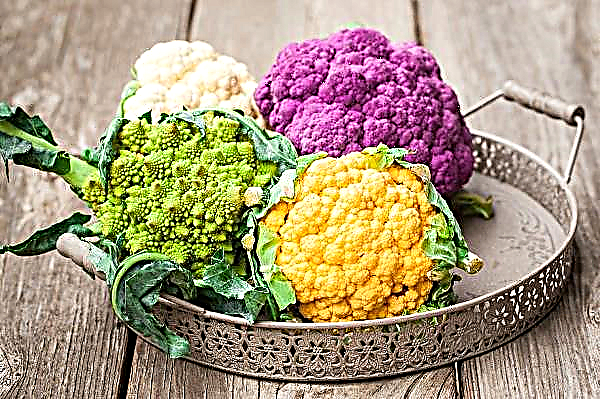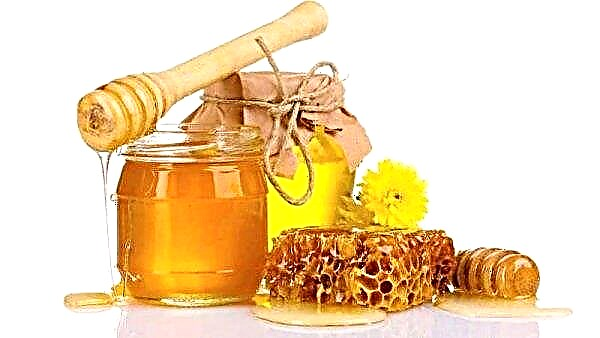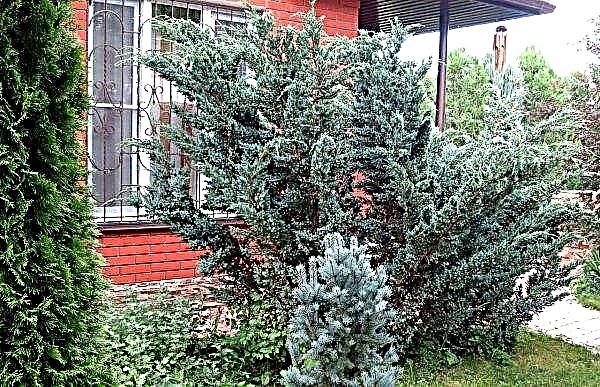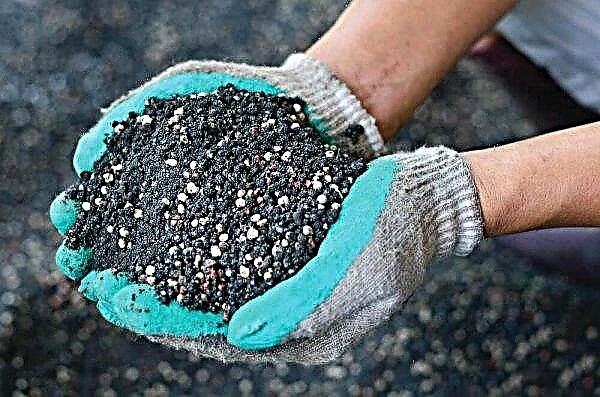Widely known among gardeners, a houseplant called Waller or Waller balsam has not only excellent decorative properties, but also unpretentiousness in the care and cultivation. Even those who have just recently decided to engage in indoor floriculture will be able to grow more than one instance of this wonderful flower without problems, especially after reading our article.
Description and characteristics of indoor plants
Waller balsamine has large and bright flowers, which can have a variety of colors, depending on the variety. We have a very popular variety of Temptation, especially decorative specimens with amazing orange and light pink shades. The birthplace of the flower is the African and Asian tropics.
You can also hear the popular names of this plant - Spark, Roly wet, Impatiens. It was no coincidence that the flower got such names, because its bright color burns like fire, at the tips of leaves in the morning you can see droplets of moisture, and with the slightest touch it will immediately drop its seeds.
Did you know? In Germany there is Hildesheim Cathedral, which is famous for the fact that the same rose bush has been growing near it for more than a thousand years. It is considered the oldest bush in the world.
This houseplant has the following characteristics:
- a powerful root system, which is often very tangled and can even grow through drainage holes;
- the stem is juicy, but quite fragile, grows to a height of 50-60 cm, branches;
- the leaves are wide, oval, pointed up, their color can be from light green to dark green, some varieties have reddish hues, length - 10-12 cm, width - 5-7 cm;
- flowering - almost all year round; flowers are white, red, pink, lilac, orange, spotted, two-tone varieties are found;
- there are varieties with single flowers and collected in inflorescences, simple and double;
- after flowering, the fruit is formed in the form of an oblong capsule, inside there are 5 valves, in which more than a thousand small seeds will ripen in the future.
Growing conditions
It’s not difficult to grow Waller balsam, but still it’s important to know what conditions a flower needs so that it successfully develops and delights you with abundant flowering, they are as follows:
- Temperature. This indoor flower belongs to heat-loving plants, so it tolerates temperatures of +25 ... + 26 ° C with regular spraying and the influx of fresh air. The minimum temperature that balsam can withstand is + 10 ° C.
- Lighting. The plant needs bright light, then there will be no problems with flowering, it will last almost all year round.
- Watering. It is carried out regularly and always with soft defended water. Watering must be very careful so that water does not fall on the green part of the plant, otherwise decay may occur.
- Air humidity. For balsam, moderate air humidity is required, additional moisture is only required in the summer, in the heat.
Important! When placing Waller balsam on the balcony or on the south window, be sure to use shading, otherwise there will be burns from direct sunlight.
Landing Features
Consider the important points when planting a flower, the non-observance of which may cause problems with further development and decorativeness.
Pot selection
When choosing a container for planting indoor balsam, then take into account its feature: abundant flowering occurs in a tight pot. Some gardeners plant several pieces in one pot, which ensures excellent flowering and splendor of the bush.
Soil Selection and Processing
To plant this indoor flower, you need a light and nutritious soil mixture with an acidity of 5.8–6.2 pH. Ready-made soil options for flowering plants or prepared independently.
In the latter case, make this mixture:
- sheet land - 2 parts;
- peat land - 1 part;
- humus - 1 part;
- sand - 1 part.
Important! When planting balsam in a pot, be sure to pour a layer of drainage of at least 5 cm, this will prevent water from stagnating.
Landing technology
When planting in a new tank, the first thing the plant is removed from the old very carefully, together with the ground. If possible, it is better to shake off the ground and then inspect the roots. The longest and tangled roots must be cut with a sharp knife and be sure to lower them into crushed ash. Next, quickly place the flower in a pot, cover it with earth and water moderately. Note that the depth of the plant must be maintained so that the place where the stem goes to the root is 1.5–2 cm above the ground.
Growing and caring at home
No less important than the previous aspects in the cultivation of Waller's balsamins, is the proper care of this flower. Therefore, we consider in more detail how to care for this houseplant.
Fertilizing and watering
Watering balsam is carried out taking into account the following rules:
- in summer - watering plentiful, daily (preferably in the morning or in the evening), spraying is added to the strong heat;
- in autumn - watering as necessary;
- winter (January, February) is a period of rest, therefore, watered once a week.
Important! Carefully watch the balsam leaves, they first of all feel a lack of moisture and begin to fade. Measures should be taken immediately, but carefully. Do not fill the flower very abundantly, because of this, the roots may rot.
Fertilizing this indoor flower is necessary only during the period of abundant flowering, that is, in spring and summer. As a top dressing, any complex mixture for flowering plants is suitable, the frequency is once every two weeks, but the dose indicated in the instructions is reduced by exactly half. Keep in mind that organics are not used for such plants, as they lead to rotting of the roots.
Do you need pruning?
Usually, balsam is transplanted annually in spring. After that, it is best to trim the bush so that it has a neat appearance and releases new side shoots. To do this, the longest branches are shortened, and the tops are pinched. Do not discard the resulting slices, but use them for propagation.
Did you know? The English Prince Charles has a piece of land on the island of Sicily, for the rental of which he receives only one daffodil flower per year, which indicates the kindness and generosity of this man.
Seed propagation
Simply grow this homemade flower from the seeds.
Start in March and follow the following plan:
- prepare a box for seedlings with a light and breathable soil mixture, moisten it a little;
- spread the seeds on the surface, keeping a distance of 2-3 cm between them and squeeze lightly;
- cover the box with a film and place it where it is warm and light;
- be sure to ventilate the seedlings, water as necessary;
- wait for shoots in two weeks;
- picking in separate pots (not more than 10 cm in diameter) is done when two true leaves appear;
- pinch the top after the seventh leaf;
- if necessary, when the bush grows a little, it is transplanted to a permanent place.
Video: propagation of balsam Waller seed
How is the flowering period?
Waller's balsam blooms for a long time - all summer and autumn months, sometimes flowering specimens can please us until the New Year. It is during this period that maximum care is required. An interesting feature is that at the same time on the plant you can observe buds, blossoming flowers and withering. Then the flower begins to rest, which lasts 2-3 months - December, January, February.
Diseases and pests of balsam
Waller balsam can be exposed to such diseases and pests:
- excess watering can lead to decay, it is necessary to deal with it immediately by extracting from the old soil and replanting into a new one;
- in case of detection of white sticky plaque on the leaves, know that the flower was affected by powdery mildew, treat it with callloid sulfur or Topaz;
- among the pests, we note aphids and red spider mites, soap and insecticides (Aktara, Fitoverm, Aktellik) are used to combat them.
Wonderful indoor flower of Waller balsam can be seen in many houses of gardeners and just lovers of home flora. After all, it does not require a lot of care and attention, and the variety of varieties will allow everyone to choose the instance that will appeal to you and successfully fit into the home interior. Therefore, if before this time you were not familiar with indoor balsam, we advise you to pay attention to it and grow at least one.


